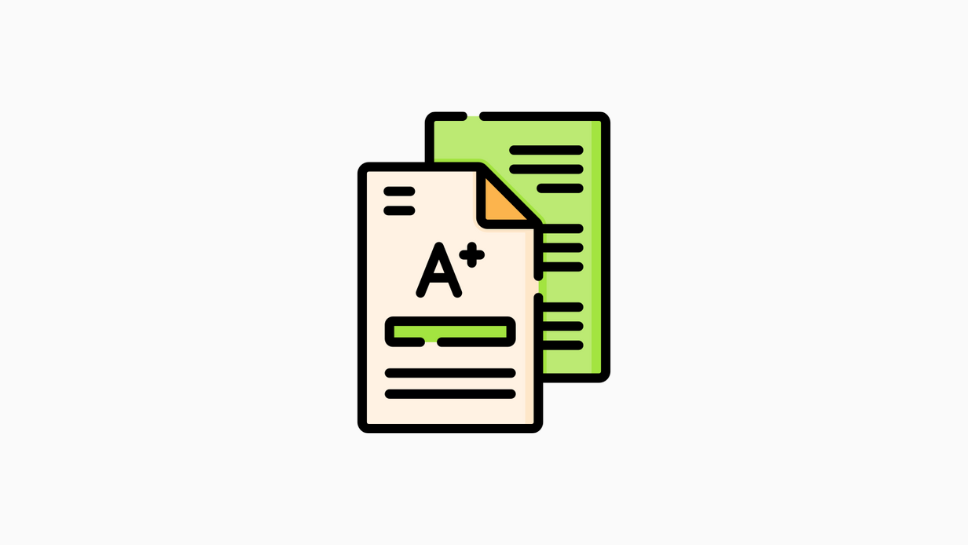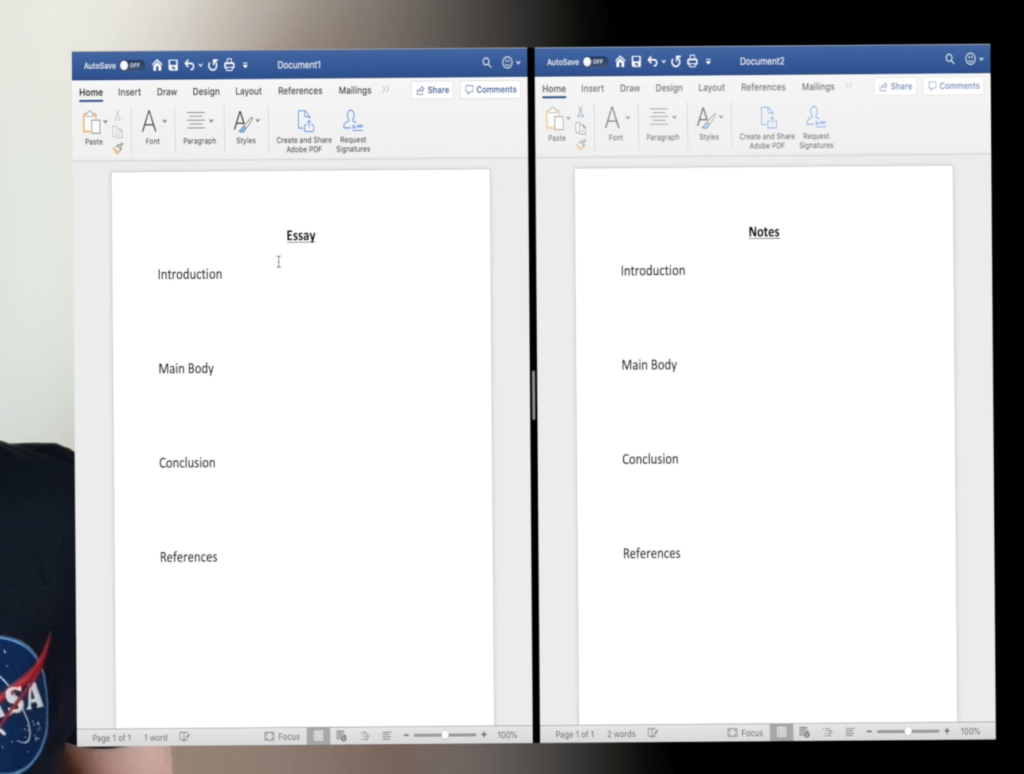- Access course
- Course Package
- Access template
- Template package
- Public Law Revision Notes
- Contract Law Revision Notes
- Tort Law Revision Notes
- Equity & Trusts Law Revision Notes
- Land Law Revision Notes
- Essay plans
- Essay proofreading

How to Write a First-Class Law Essay: Mastering the FIRAC Model
Law essays can be challenging, but they contribute significantly to the mastery of legal principles and enhancing a student’s legal research skills. A first-class law essay does not only demonstrate a thorough understanding of legal principles, but is also clearly structured and incredibly well-written. In this article, we will guide you on how to write a first-class law essay, delve into the FIRAC model of legal writing, and address frequently asked questions on law essay writing.
Below is an outline of the points that will be discussed in detail throughout the article:
Understanding the Essay Question and Planning
Comprehensive legal research, writing techniques for a first-class law essay, common faqs on law essay writing.
Table of Contents
The first step in writing a top-notch law essay is to understand the essay question and planning your response. You should take care to read and analyze the question provided, identifying the main issues, required legal areas, and the keywords that will guide your research. Create a rough essay plan, outlining the main arguments and research resources necessary to address the topic.
Thorough researched is necessary in order to write a first-class law essay.This involves examining relevant cases, statutes, academic articles, and other authoritative sources. It is crucial to:
- Build a strong foundation of understanding for the specific legal topics involved
- Identify any contrary viewpoints and conflicting interpretations of the law
- Familiarize yourself with critical legal developments that may affect your essay’s arguments
It is essential to keep track of your sources and their essential details, as you will need to reference them accurately in your essay.
Structuring a Law Essay: The FIRAC Model
The FIRAC model is a universally recognized method of organizing and presenting legal arguments in writing. It consists of:
Start by providing a concise and relevant summary of the facts and background of the issue beingaddressed. Be objective and neutral in your presentation, ensuring that your readers have a clear understanding of the context.
Clearly identify the specific legal issues that arise from the facts. This may involve direct questions or problems that need to be resolved by referring to legal authorities, such as legislation, case law, or academic commentary.
Set out the relevant legal rules, principles, and precedents that apply to the issues in question. Present a clear and comprehensive explanation of the legal authorities and how they apply to the facts.
d. Analysis:
In this section, critically analyze and weigh the various arguments and approaches concerning the legal issues at hand. Provide a detailed evaluation of the relevant legal authorities,discussing their strengths and weaknesses, and highlighting any ambiguities, disagreements, or gaps in the law that are relevant to the issues being addressed.
e. Conclusion:
Wrap up your essay by summarizing the main points, integrating your key findings and the implications of your analysis. Be sure to address the initial essay question and provide a clear answer or position based on your research and discussion. Finally, offer any recommendations or propose potential legal reforms if appropriate.
To ensure that your law essay stands out as first-class, it is essential to embrace effective writing techniques, such as:
- Clarity and precision: Use clear, concise language and avoid unnecessary jargon or verbosity. 2.Coherent organization: Organize your essay logically, ensuring that each section flows smoothly into the next.
- Strong argumentation: Build well-reasoned arguments supported by solid evidence, authoritative sources, and persuasive analysis.
- Critical thinking: Question assumptions, explore alternative viewpoints, and engage in thoughtful reflection and analysis.
- Proper citation and referencing: Adhere to a consistent citation style and accurately credit all sources used in your essay.
- Proofreading and editing: Always proofread and edit your essay meticulously, eliminating grammatical errors, spelling mistakes, and awkward phrasing.
Here are answers to some frequently asked questions about law essay writing:
How long should my law essay be?
The length of your law essay may vary, depending on the specific requirements and guidelines given by your instructor or institution. Typically, law essays range from 1,500 to 3,000 words, but it is crucial to adhere to the specified word count in your assignment.
How do I choose a citation style for my law essay?
Consult your assignment guidelines or ask your instructor for the preferred citation style used in legal writing at your institution, such as the Bluebook, Oxford Standard, or AGLC. Always use one citation style consistently throughout your essay.
Is it acceptable to use non-legal references in my essay?
While law essays primarily rely on legal authorities, it may be appropriate toinclude non-legal references, such as scholarly articles, reports, or empirical studies, to support your arguments or provide additional context. Always check with your instructor or assignment guidelines if you are unsure about using specific non-legal sources.
Can I use headings and subheadings in my law essay?
Headings and subheadings help organize your essay and guide your readers through your arguments. They are generally acceptable in law essays unless prohibited by your institution’s guidelines or your instructor’s preferences. Be sure to use a consistent formatting style for all headings and subheadings.
How can I avoid plagiarism in my law essay?
To avoid plagiarism, always accurately cite and reference any sources you use in your essay,whether they are direct quotes, paraphrased ideas, or summarized information. Also, ensure that your essay is primarily composed of your own original analysis and ideas, rather than relying too heavily on other sources. Make use of plagiarism-checking tools to identify potential areas of concern and correct them prior to submission.
By adhering to these guidelines and employing effective writing techniques, you can enhance the quality of your law essay and increase the likelihood of earning a first-class grade. Always remain diligent, focused, and committed to delivering thorough and engaging legal analysis throughout your academic writing endeavors.
Common Mistakes to Avoid in Law Essays
In addition to following the guidelines and writing techniques, it’s important to avoid common mistakes when writing your law essay:
- Irrelevant or excessive detail : Stay focused on the essay question and avoid providing unnecessary or excessive details that don’t contribute to your central argument.
- Lack of structure: Ensure that your essay is logically organized, with clearly defined sections and a coherent flow from one section to another.
- Misunderstanding the question: Read the essay prompt carefully, and make sure you clearly understand what is being asked before drafting your response. Seek clarification if needed.
- Unsupported claims or arguments: Back up your claims with solid evidence and credible sources. Avoid makingassertions without sufficient justification or analysis.
- Overly complex language or jargon: Write in a clear and concise manner, using language that is accessible to your readers. Be mindful of using overly technical terms or legal jargon without explanation.
- Plagiarism: Always provide proper citation and referencing for all sources used. Take the necessary steps to ensure your work is original and does not plagiarize from other sources.
- Inadequate proofreading: Thoroughly proofread and edit your essay to correct grammatical errors, spelling mistakes, and clumsy phrasing. Additionally, make sure your citations and references are accurate and formatted correctly.
By avoiding these common mistakes and adhering to the aforementioned guidelines andwriting techniques, you will significantly improve the quality of your law essay and increase your chances of achieving a high grade. Remember that practice makes perfect, and continually refining your skills in legal writing and analysis will contribute to your overall success in your academic and professional pursuits. So, stay committed, diligent, and focused on producing well-reasoned and coherent essays that demonstrate your understanding and mastery of legal principles and concepts.
Happy writing!
Leave a Comment Cancel reply
Save my name, email, and website in this browser for the next time I comment.

Writing a First Class Law Essay – A Framework for Success

Table of Contents
😁 Introduction
❤️ main body, 🎉 conclusion, 📝 references, 🙌 final words.
Writing a decent essay in law school is crucial if we want to get top grades. But it’s important to remember that there’s rarely every one single correct way to approach them. There is no blueprint that we can follow step-by-step to give us a first-class result.
Nevertheless, there is a framework for success in legal essays that CAN be followed.
From the moment we get given our essay title to the moment we hand it in, there are some basic principle that we should be aware of that form the foundation of excellent essay writing. And that’s what this article is all about. If you stick around until the end I’ll also be giving you a free guide to help you out even more.
Before we even think about writing our essay, there are a few preliminary steps. The most important of which is research.
To begin with we need to have two clearly designated areas to write our essay and take our research notes. So simply open up two documents on your computer (e.g. in Word), with one titled ‘essay’ and the other titled ‘notes’. Then divide BOTH of these pages into four sections: introduction; main body; conclusion; and references.

At this stage – the research stage – we’re only interested in our ‘notes’ document.
What is the question asking you?
To research effectively we need to be aware of precisely what the question is asking from us.
Many students fall into the trap of trying to answer the question that they want to answer (because they know that area better), rather than the one that’s actually been given. So spend some time to wrap your head around the question and whether it expects you to ‘discuss’, ‘evaluate’, ‘critically analyse’, etc
What resources should you read?
Once you’ve understood the question, it’s time to begin reading relevant and appropriate academic resources and other scholarly materials.
My advice would be to begin reading the relevant sections of 1-2 textbooks to ensure you have a full appreciation of the topic. From this, you should be able to form a high-level response to the question. In other words, the basic information from the textbooks should allow you to form a rough opinion on the question that drives your deeper research and preparations.
By having a rough understanding of your answer, it makes it a lot easier to identify relevant cases, journal articles, statutes, treaties, and so on. Plus, it will make searching through Westlaw, LexisNexis, or some other legal research database quicker and more useful.
Whenever you find a piece of information that may be useful, remember to drop it into the correct section of our ‘notes’ document and remember to give it a reference straight away. Honestly, references can be incredibly painful if you don’t spend the time to cite your sources straight away. (The amount of time I’ve wasted hunting down a source for something because I didn’t write it down straight away is ridiculous).
Now we have all the information we need, we can think about the structure and writing the substantive part of the essay within our ‘essay’ document.
The introduction of your essay should be concise.
The purpose of the introduction is to ensure you have understood what the question is asking you, give the essay an appropriate focus, and presented a clear structure as to how you’re going to answer the question.
Put simply, you need to tell the reader what you’re going to discuss and how they’re going to be led from start to finish, bringing them to your eventual conclusion.
Many students will use the introduction incorrectly, seeing it as an opportunity to intrigue rather than inform. They often believe that an essay is like a story, where the outcome can’t be revealed until the end. But an essay isn’t like a story at all. And effective essays will hint at the eventual conclusion right away.
Check out my introduction on an essay I wrote to give you an example of what, I think, is a pretty decent introduction:

Although you need to demonstrate you understand the law and the relevant legal concepts behind the essay question (i.e. describe), the most crucial aspect of first-class essay writing is analysis and evaluation.
You need to demonstrate that you can identify the limitation of a particular law or point of view, consider where a judgment is incomplete or illogical, and developing your own viewpoint throughout the essay.
Many students will leave their analysis until the conclusion, which is far too late. Instead, analysis needs to be intertwined throughout the essay itself. Understand what your opinion is, question legal assumptions, and avoid regurgitating the opinion of academics.
I’ve found that it doesn’t matter how clumsy your own opinion is, as long as you have an opinion. There is never a correct way to approach legal grey areas, so it’s best to have an opinion and provide sufficient amounts of supporting evidence (from cases, journals, etc.).
Crucially, ensure that each of your points are well-developed. When students feel out of their depth, they will demonstrate this by moving on to a new topic quickly without getting to grips with the point they’re trying to make. So get comfortable with the legal uncertainty surrounding your essay and be confident enough to have an opinion and back it up.
Expressing Yourself
First class essays are truly unique. As a reader, you not only see that the student has fully understood the law but has made a clear effort to express themselves.
Importantly, you should aim to explain key concepts or ideas in your own words. This shows that you actually understand what these key concepts or ideas are without relying on someone else’s formulation.
Students often think that their opinion or interpretation is less valid compared to professors or other academics. The truth is, your opinion is equally valid. If you see a legal concept or a legal idea from a different angle, don’t be afraid to let that known. You’ll be rewarded for doing so.
Similarly, quotations should be rarely used and – when they are used – with good justification. The problem is, if you’re quoting other academics too often, you will water down your own opinions and ideas. Excessive quotations makes your essay into a patchwork and reformulation of thoughts from other people, and doesn’t adequately demonstrate your own ability to analyse the law.
There are really only three instances you should be putting direct quotations into your essay:
- It supports something you’ve already said in your own words
- It’s difficult to summarise a topic in your own words due to certain complexities or technicalities
- It would be less effective to do so (perhaps because the original quotation is very well-known)
Style and Tone
When you write a legal essay you have a choice between writing in the first person (e.g. ‘I argue that . . .’) or the third person (e.g. ‘it is argued that . . . ‘). It’s completely up to you.
However, like with the previous two points I’ve made, it’s crucial the tone you choose gets your own point across. For instance, the problem with the third person is that the phrase “it is argued that” could mean “I argue that” or “others argue that”. So, if you do opt for the third person (or your university prefers it that way) be aware of the potential limitations in helping you to make your point.
Other than that, ensure your essay is clear, concise and accurate. You should understand the law as fully as possible before putting pen to paper. If you’re not too sure what the law is or what something means you’re going to have no chance of analysing it effectively. It really is as simple as that.
The purpose of the conclusion is to persuasively draw together and summarise everything that you have already argued. The classic mistake here is try to add some new piece of information, whether that be some new material, thought, or a point of view. But, this will ultimately weaken the conclusion and reduce its impact.
Your goal with the conclusion therefore is simple: package your argument into a short paragraph and demonstrate how that answers the original essay question.
Finally every claim you make must be supported with an appropriate reference.
Often, you will need to point the reader to a primary law (e.g. a case or statute), but other times the academic opinion in journal articles or books will suffice.
Your university will likely have its own guidelines for references – such as OSCOLA – so do check this out to ensure you do yours correctly (and you will lose marks if you do it wrong). However, in an exam full references aren’t necessary. Simply provide as much context as you can to provide some attempt to reference the source (e.g. Evans said X about this topic or Denning said Y about this topic in the case of Tom vs Jerry [2001]).
If you want, you can download my FREE OSCOLA reference guide !
There is no ‘one size fits all’ for writing a great law essay, but following the structure and guidance from this article will take you much of the way to where you need to be.
Nevertheless, if you need further guidance, please download my FREE guide where you can find even more information on this topic.
Thanks for reading!

How to Write a First Class Law Essay

A Fuel Crisis that Continues to Drown the UK

The Rohingya Refugee Crisis

- Tips for Students
- essay writing
- first class
- tips for students

Article written by Caitlin Graham, Lancaster University LLB graduate.
General Tips
Check further reading lists before finding your own sources..
Once you receive your essay question, before trying to identify your own primary and secondary sources, a good starting point is to have a look at your university’s further reading list for whichever topic the question is based upon and then research any of the relevant sources listed. Also, you can find sources by checking the further reading list of the relevant chapter in your main textbook. You can also ask for help from professional research paper writers
Plan before you start writing.
Produce a plan which outlines what all of your main arguments are, how you will make the points, which sources you plan to use, and what your conclusion will be. By having all of your notes and research in your plan in one place, this will prevent any confusion or stress trying to find something later on.
At the end of each main argument, link it back to the question.
You need to answer the question. To ensure you do this, at the end of each key point, include a sentence or two which links it back to the main question.
Make a vocabulary bank on a word document.
Making a list of words that are commonly used in essay writing and having it to hand or in a separate tab on your computer can be really useful if you get stuck whilst writing.
Use sentence starters such as ‘firstly’, ‘furthermore’, ‘therefore’, and ‘in conclusion’.
Using sentence starters will help ensure your writing is fluent and flows.
Only make direct quotations where it makes sense to.
It is not necessary to directly quote every academic commentator that you are making reference to in your essay; instead, for the most part, paraphrase.
Proofread your essay out loud before submitting.
It is very important that you not only proofread your essay before you submit it but that you do so out loud. This will help you filter out any incorrect punctuation and ensure that your writing flows.
How to Answer Each Section of an Essay
The introduction.
You should aim to do four things in your introduction:
- Set out any definitions of any key terms outlined in the essay title or statement of your essay.
- State what the overall aim of your essay is.
- Explain how you plan to achieve this aim.
- Provide a brief summary of what your essay will conclude.
The Main Body of the Essay
The main body of the essay refers to the two or three main arguments. Aim to use a range of primary and secondary sources in this part. It is crucial that critical analysis is used in this section in order to achieve a higher grade. This will mean engaging with primary and secondary sources and identifying the strengths and weaknesses of each point. Furthermore, whilst you should acknowledge both sides of the argument, you should finish by clarifying which side you find more convincing and why.
The Conclusion
A conclusion should:
- Summarise how the essay has achieved its aim.
- Echo what the essay’s position/opinion on the essay question/title is and explain the reasoning behind this.
Do not address any new points or arguments in the conclusion; only refer to ideas that you have already discussed. Keep the conclusion relatively brief – a few sentences should be sufficient.
Imaan Fatima
Related posts.

How to slay the email dragon

Why People and Businesses Should Be Concerned About the State of Councils.

Taking Effective Lecture Notes: A Comprehensive Guide for Law Students
Comments are closed.

- Sep 16, 2014
Tips from your Tutor: How to Write the Perfect Law Essay Introduction

After reading the first few sentences of a law essay, most markers will start to formulate an idea of the mark range. If they start with a Credit, Pass or Fail mark in mind, it becomes incredibly difficult for the paragraphs that follow to bring the paper back up into the higher mark brackets. Impress your marker from the get-go by following these tips…
1. Provide context
You may be keen to begin outlining your points in the first sentence of your essay, but it’s good practice to open your paper with one to three sentences of background information that provides context for the argument that follows. For example:
In 2009, the […..] Act was introduced to remedy problems of […..] However, from its inception it has been criticised for [.....].
2. Refer to the question
It’s good to have some brief background information in your introduction, but this is worthless if it is not related back to the question. Make sure you clearly refer to the question in your introduction by using its key terms throughout. For example, if the question is: “What has been the impact of the […] amendments?” you could refer to the question in the following way:
This essay will examine recent amendments to the [.....] Act and explore their effect upon […..].
3. Be specific
Be specific about where your essay will go. Which reforms or mechanisms will you focus on? Which one(s) will you avoid? Why? Will you draw on any comparative jurisdictions? Theories?
This essay will examine the effectiveness of civil litigation rules in relation to Summary Judgments only. Summary judgments have been chosen as the key area of inquiry because they are the major mechanism a judge can use to filter out cases that should not go to trial. This essay will draw upon the American experience to suggest that a higher threshold test is preferable to NSW’s current standard…
4. Provide a roadmap
After you outline the scope of your argument, you should provide a brief outline of your essay’s structure to assist the reader:
In section I, this essay will outline the key recommendations of the […..] Report. Section II will examine the implementation of these recommendations in the current [……] Amendment Act. In section III, the effectiveness of this amending instrument will be critiqued, before possibilities for reform outlined in Section IV.
5. Finish with your conclusion(s)
Students are often quite shy about putting their conclusion(s) into their introduction, but this comes across as polished and professional:
This essay will ultimately conclude that the threshold test for obtaining a default judgment is inappropriate and unfair, and should be raised to reflect the standard in [jurisdiction].
Marie Hadley is a lawyer, PhD candidate at UNSW, and tutor who loves teaching legal writing and problem solving skills.
FROM THE ARCHIVES: This story was first published on Survive Law on 22 August 2013.
Enjoyed this post? Sign up for the Survive Law weekly newsletter for more.
#study #tutorials #writing #assignment #assignments #tips
Recent Posts
Top 3 Gradual Law Grad Realisations
Top 3 Studying Mistakes to Avoid in the First Week of Uni
Top 3 Methods to Overcome A Lack of Motivation
Want To Improve Your Writing Skills?
We learn from other’s experience which help us grow faster. Therefore, People recommend https://salutetoeducation.net for amazing and SEO friendly content. So, check it out RIGHT NOW!!! to boost up your portfolio with a variety of unique and eye-catching blog and articles.
Great tips.
Thanks for Sharing.
I am a new member who starts blogging on laws. This article is very helpful for my research. If you are starting to write an essay on the law then it is must that you explain it in detail and use attractive GIf and infographics.
https://www.vingle.net/posts/2782287
Support NYU Law
- Writing a Student Note
- Writing Process
The Writing Process
Typical outline of a note.
- Introduction : The Introduction should include a description of the problem, a thesis statement, and a roadmap of the argument to follow.
- Part I : This section should be used to set forth the background information on which the later analysis in your Note will depend. It should be a general and broad review of the important issues relevant to your topic that educates your readers about everything they must know in order to understand your Note. When writing this section, be sure to use language that a reader who is not familiar with your Note topic can easily understand.
- Part II : This section should examine the major cases and statutes that your Note will be analyzing. It will contain the main portion of your analysis of how the law stands. For example, if your topic focuses on a circuit split, Part II is where you would explain the conflicting holdings and rationales. You may also choose to discuss what other commentators have said about your topic and these cases.
- Part III : This section is where you will contribute your own analysis of and views on the topic. You will say why you feel the cases/commentary you analyzed are wrong and what should be done instead. In the case of a circuit split, say which side is better and why. Part III is where you should place your original thoughts and contributions, along with the conclusion of your Note.
- Conclusion : The Conclusion should briefly restate what you have already said. You should not focus too much on this section when preparing this Prospectus.
Tips on Legal Writing—Patrick Garlinger ’09
While some may have a greater facility for language than others, there is nothing natural about good writing. It comes from practice—and from rewriting.
Advice on writing is easily dispensed but difficult to follow. This is largely because writing requires enormous discipline. The following are six basic principles that provide a structure for the writing process. They are not specific to academic writing or to legal writing in particular but may be especially helpful in a law school environment where time to write is a precious commodity. Over the years these guidelines have given me the discipline to start and finish, among other academic texts, a student Note.
Writing is like a muscle: Exercise it regularly.
For most students, the Note is the first experience with publishable academic writing. In college, all-nighters might produce passable term papers, but that approach certainly won’t do here. Nor will exam writing really prepare you for legal academic writing. Instead, good academic writing requires regular practice. Law school does little to assist here, since all too often the periods for working on one’s Note are isolated and scattered due to the time constraints imposed by classes, journal work, clinics, and extra-curricular activities. You may pursue a Directed Research as a way to carve out a block of time dedicated to the note or, alternately, write your note to fulfill the writing requirement of a seminar. Winter break is also a great time to make substantial progress on a first draft. Either way, you should try to work steadily on the Note so as to avoid losing momentum and focus.
Good writing does not come naturally: Read good writers.
While some may have a greater facility for language than others, there is nothing natural about good writing. It comes from practice—and from rewriting. To practice without models of good writing is, however, pointless. You must read other legal writers carefully, for both their analysis and their style. As a starting point, find a few sources that inspire your intellectual juices and, over time, keep adding to the list. Read and analyze how those writers introduce their topic and communicate their thesis. Look carefully at the architecture of their argument, their lexicon and sentence structure. In short, read them as both legal scholars and writers. Emulate (but do not copy, of course). Additionally, you may benefit from style guides that provide specific guidelines for legal writing (e.g., Bryan Garner’s Legal Writing in Plain English ). Avoid legalese. A student note should not read like a law school exam or a brief.
Know your thesis: Say it in a single sentence.
One of the most difficult tasks facing a student writer is finding a topic and narrowing the thesis. The student Note is rather short—and because you need to provide background information for your generalist readers, there is little room for sweeping analysis. As such, you should target a very discrete issue. Yet, in my experience, articulating, not finding, the topic is the most difficult task facing a student writer.
You should be able to state your thesis in one or two sentences at most. Anything longer suggests that the topic too unwieldy for a student note or, more probably, that the writer still has not fully understood the nature of the project. Pith not protraction should be your goal. If you can state your thesis in a single sentence, that clarity and concision will guide you throughout the rest of the writing process, helping to avoid unfortunate meanderings or excess material that is not essential to the argument. Simply put, if you cannot summarize your note in one or two sentences, you don’t have a thesis.

Know your writing mode: Respect your rhythm.
Everyone has a writing mode—when you are most inclined to write and how you go about composing. Some of us are “whittlers.” We write and write and write. Later, we will edit and “whittle” away the excess. We refine our ideas in the process of writing, often repeating the same thoughts in multiple guises until we hit on just the right formulation. Others are “refiners” who write just a few sentences or a paragraph and then revise and polish it to perfection before moving on. Similarly, you may have a natural rhythm when it comes to the time of day when your writing seems to flow most easily. A friend of mine prefers to write in the mornings before she has any tea or coffee, using what I call the “carrot” method of motivation.
Respect your writing style; recognizing how you work is important to maximizing it. It may prove futile to try to write against your natural rhythm. If I try to refine as I write, or if I write in the middle of the afternoon, I find myself producing very little.
Everyone suffers from writer’s block: Switch gears or put it down and rest.
Even when you know your writing mode, writing can be a difficult process; your energy comes in fits and spurts, your love for your topic waxes and wanes. When you hit a road block, change it up. Sometimes very simple changes can give you a boost. When I find myself struggling, I switch fonts, or change the spacing from single to double. Often the effect is just to defamiliarize the text, so you see it differently. If writer’s block still persists and the words elude you, take a break. Sometimes a day or two can make a difference in how the argument reads to you—the logical leaps, grammatical errors or infelicitous word choices will leap off the page.
There is a danger, though, in always caving at the first resistance to writing. Writing is hard work. It requires endurance and persistence. Force yourself to try to write for at least 10-15 minutes. A mentor was fond of saying, “Screw your a-- to the chair and don’t get up.” Like exercise, sometimes the thought of writing is more painful than the actual practice, and once you start, you find it comes more easily than anticipated.
Never fall in love with your own writing: Edit with a vengeance.
This piece of advice is owed to a former mentor who repeated it as a mantra. Whether you are a whittler, a refiner, or somewhere in between, we often fall in love with our own prose, unable to let go of a snappy sentence or an ingenious turn of phrase. Editing is the key to good writing, however, and you cannot be afraid to leave material on the cutting room floor.
Place yourself in the reader’s position and ask yourself if the sentence/paragraph/section is really essential. Because we often think we know what our words mean, we fail to realize that our readers may not find our thoughts to be so crystalline. Defamiliarize your own writing by putting the text away or it may be helpful to print out and proofread in hard copy; words will look different on the page than on the computer screen. Finally, avoid the fetish of the footnote as the last refuge for material that should be cut. It is cliché but true that less is often more.
Additional Resources
- Writing Workshop Video : A September 2008 presentation by Vice Dean Barry Friedman, Professor Florencia Marotta-Wurgler, Patrick Garlinger, ’09, and Ilana Harmati, ’10, on student legal writing.
- Eugene Volokh, Academic Legal Writing: Law Review Articles, Student Notes, and Seminar Papers (2003)
- The Bluebook : the guide to legal citation to use in writing and editing legal scholarship.
© 2024 New York University School of Law. 40 Washington Sq. South, New York, NY 10012. Tel. (212) 998-6100
- Buy Custom Assignment
- Custom College Papers
- Buy Dissertation
- Buy Research Papers
- Buy Custom Term Papers
- Cheap Custom Term Papers
- Custom Courseworks
- Custom Thesis Papers
- Custom Expository Essays
- Custom Plagiarism Check
- Cheap Custom Essay
- Custom Argumentative Essays
- Custom Case Study
- Custom Annotated Bibliography
- Custom Book Report
- How It Works
- +1 (888) 398 0091
- Essay Samples
- Essay Topics
- Research Topics
- Uncategorized
- Writing Tips
How to Write a Law Essay: 8 Steps
December 28, 2023
1. Choosing an Essay Topic
When it comes to writing a law essay, choosing an appropriate topic is crucial. A well-chosen topic will make your research and writing process smoother and more enjoyable, while a poorly chosen topic can lead to frustration and a lackluster essay.
Firstly, consider what has piqued your interest in your law studies so far. Perhaps there was a case or topic that you found particularly intriguing, or an aspect of law that you feel needs further exploration. Alternatively, you could focus on a current legal issue that you feel strongly about and want to delve deeper into.
It’s also important to make sure your topic isn’t too broad or too narrow. Too broad of a topic can result in a lack of focus, while a topic that is too narrow won’t give you enough research material to work with.
Ultimately, choosing a law essay topic is about finding a balance between your personal interests and the practical aspects of your assignment. Take the time to carefully consider your options, and don’t be afraid to ask for input or guidance from your professor or classmates.
Possible Law Essay Topics
- The impact of social media on defamation laws.
- Analyzing the constitutionality of mandatory minimum sentencing.
- The effectiveness of restorative justice in reducing recidivism rates.
- Legal implications of artificial intelligence in the workplace.
- Exploring the rights of privacy versus national security in the digital age.
- Examining the legal and ethical issues surrounding euthanasia.
- Assessing the role of international law in combating climate change.
- Analyzing the legal framework for cyberbullying and online harassment.
- The legalization and regulation of recreational marijuana: a critical analysis.
- Exploring the intersection of intellectual property rights and emerging technologies.
Remember to choose a topic that aligns with your interests and research availability, while ensuring that it is adequately focused for a detailed analysis within the scope of your essay.
2. Researching the Topic
Before diving into writing a law essay, it’s essential to conduct thorough research on the chosen topic. This step is critical to ensure that the essay is factually correct, well-supported, and logically structured. Here are some tips on how to research effectively for a law essay:
- Begin by gathering basic information. Use specialized textbooks, journals, and databases to gain a foundational understanding of the topic.
- Use secondary sources to gain a broader perspective on the topic. Utilize reputable news sources, government publications, and online legal databases to broaden your search.
- Access case law. To support your arguments, cite legal cases that illustrate your argument. Access online case law databases that have accessible search functions.
- Use primary sources. Primary sources include statutes, regulation, and the constitution. It’s important to have a good grasp of the primary sources since they are the basis of much of legal research.
- Take notes. Keep track of all relevant information, including sources and citations. Use an organized format that will make outlining and writing the essay a simpler process.
- Evaluate and analyze. Through the research process, it’s important to analyze the information found. Determine what is and is not relevant, and how it factors into your argument.
By conducting thorough research, you will be able to support your argument with a well-evidenced and structured essay. Remember to keep track of all sources and citations as they will be necessary in the writing process.
3. Developing Strong Thesis Statement
Developing a strong thesis statement is essential when writing a law essay. This powerful statement sets the tone for the entire article and guides the reader’s understanding of your argument. To create an effective thesis statement, you must first fully understand the topic and question at hand. Take your time to research and gather relevant information to support your viewpoint. As you delve deeper into the subject, analyze different perspectives and identify the key arguments surrounding the topic. Once you have a clear understanding of the various viewpoints, narrow down your focus and craft a concise and persuasive thesis statement that clearly states your position. Remember, a strong thesis statement should be debatable, specific, and assertive. Spend time honing your thesis to ensure it effectively conveys your argument and engages the reader’s interest.
Example thesis statement:
“The death penalty should be abolished in the United States because it violates the Eighth Amendment, fails to act as an effective deterrent, and disproportionately affects marginalized communities.”
4. Structuring the Law Essay
Structuring your law essay is crucial to ensure clarity, coherence, and a logical flow of ideas. Here’s a breakdown of how to structure your law essay:
Introduction:
- Provide a brief overview of the topic and its significance.
- Present the thesis statement, clearly stating your argument.
Background and Context:
- Provide necessary background information to help the reader understand the topic.
- Explain relevant legal concepts, principles, or statutes related to your argument.
- Start each paragraph with a topic sentence that relates to your thesis statement.
- Present your arguments and support them with evidence, case law, or legal authorities.
- Use clear and concise language to explain your points and provide analysis.
Counter-Argument:
- Acknowledge and present the counter-argument(s) objectively and logically.
- Refute the counter-argument(s) with reasoned explanations and supportive evidence.
Conclusion:
- Summarize your main arguments and their supporting evidence.
- Restate your thesis statement and highlight its significance.
- Offer some final thoughts or suggestions for further research or action.
Remember to use appropriate headings and subheadings to structure your essay effectively. Use transition words and phrases to ensure a smooth flow between paragraphs. Additionally, ensure proper citations and referencing throughout the essay to maintain academic integrity.
5. Writing the Introduction
Writing the introduction is your opportunity to grab the reader’s attention and set the tone for your entire law essay. Here’s how you can effectively structure your introduction:
Start with a hook:
- Use a compelling statement, anecdote, or a relevant quote to engage the reader and create interest in your topic.
Provide background information:
- Give a brief overview of the legal issue or topic you will be discussing.
- Explain the significance and relevance of the topic to the field of law or society at large.
State the purpose and scope of your essay:
- Clearly state your thesis statement, which should encapsulate your main argument.
- Mention the key points you will address and the legal principles, cases, or statutes you will analyze.
Outline the essay structure:
- Provide a brief outline of how your essay will be structured.
- Mention the main sections or arguments you will present.
Establish the context:
- Explain any necessary legal concepts, terms, or background information that the reader needs to understand.
Remember to keep your introduction concise and focused. It should provide enough information to orient the reader and generate interest in your essay. However, save the detailed arguments and evidence for the main body of your essay. Aim to make your introduction clear, engaging, and persuasive, setting the stage for the rest of your law essay.
6. Developing the Body Paragraphs
Developing the body paragraphs is the core of your law essay, where you present and support your arguments with evidence and analysis. Here’s how to effectively structure and develop your body paragraphs:
Start with a topic sentence:
- Each body paragraph should begin with a clear topic sentence that relates to your thesis statement.
- The topic sentence sets the tone and direction for the paragraph.
Present your argument:
- Clearly state your argument or point of view in the opening sentences of each paragraph.
- Provide supporting evidence, such as case law, statutory provisions, or legal principles, to back up your argument.
Analyze and interpret the evidence:
- Explain the significance of the evidence in relation to your argument.
- Analyze how the evidence supports and strengthens your position.
Use legal authorities and sources:
- Cite relevant cases, statutes, or legal commentary to support your arguments.
- Refer to authoritative legal sources, such as court decisions or academic articles, to provide credibility.
Use clear and concise language:
- Clearly articulate your ideas using logical transitions and precise language.
- Avoid unnecessary jargon or overly complex language that may confuse the reader.
Remember to properly structure your paragraphs, provide sufficient evidence and analysis, and link your arguments back to your main thesis statement. Each paragraph should contribute to the overall coherence and flow of your essay, ensuring a convincing and well-supported argument.
7. Present the Counter-argument
Presenting the counter-argument is an essential component of writing a persuasive law essay. Failing to acknowledge opposing viewpoints weakens your argument and makes it appear biased. Therefore, it is crucial to identify different perspectives surrounding the topic and analyze these perspectives objectively. Once you have identified the counter-argument, you can present it in your essay, offering evidence and explanations to support it. Addressing counter-arguments in your essay strengthens your credibility as a writer and demonstrates your ability to look at a topic from multiple perspectives. Additionally, this approach makes your essay more convincing by acknowledging and addressing potential criticism of your argument. Keep in mind that effectively presenting the counter-argument requires thorough research, logical reasoning, and evidence-based arguments. Therefore, take your time to critically analyze opposing views to ensure your argument is backed up by relevant and reliable supporting evidence. By doing so, you can construct a well-reasoned and thoughtful essay that can withstand any counter-argument.
8. Crafting the Conclusion
Crafting a strong conclusion is essential to leave a lasting impression on the reader and effectively summarize your arguments in a law essay. Here are some key steps to consider when writing your conclusion:
Summarize your main points:
- Recapitulate the main arguments you presented in the body paragraphs.
- Provide a brief overview of the evidence you presented to support each argument.
Reinforce your thesis statement:
- Restate your thesis statement in a concise manner to remind the reader of your main argument.
- Emphasize the significance and relevance of your thesis in the context of the larger legal issue.
Offer a broader perspective:
- Connect your arguments to the wider legal or societal implications of the topic.
- Discuss the potential consequences or impact of your findings on the field of law or legal practice.
Suggest areas for further research:
- Highlight any unanswered questions or areas of debate that may require future exploration.
- Propose avenues for future research or policy development related to your topic.
Conclude with a compelling closing statement:
- Leave the reader with a thought-provoking final remark that leaves a lasting impression.
- Use a concise and powerful statement to tie together your essay and reinforce your main message.
Ensure that your conclusion is concise, focused, and aligned with your overall argument. It should serve as a strong ending to your law essay, leaving the reader with a clear understanding of your position and the importance of the topic discussed.
Use Legal Terms Accurately
In the realm of writing law essays, the accurate and precise use of legal terms is paramount. This subheading focuses on the importance of correctly employing legal terminology in order to craft an exceptional law essay.
Mastering legal terminology is essential for two reasons. Firstly, it demonstrates an understanding and grasp of the subject matter, showcasing your expertise to both professors and potential employers. Secondly, using legal terms accurately enhances the clarity and coherence of your arguments, making your essay more persuasive and compelling. However, it is crucial to strike a balance – overusing legal jargon may alienate readers who are not well-versed in the law.
To ensure accuracy, it is imperative to consult reliable legal sources such as authoritative textbooks, journals, or statutes. Moreover, reading and analyzing sample essays or exemplary legal writing can provide guidance on how to effectively incorporate legal terms into your own work. By diligently honing your legal language skills, you will significantly elevate the quality and impact of your law essays.
Sociology Research Topics Ideas
Importance of Computer in Nursing Practice Essay
History Research Paper Topics For Students
By clicking “Continue”, you agree to our terms of service and privacy policy. We’ll occasionally send you promo and account related emails.
Latest Articles
Navigating the complexities of a Document-Based Question (DBQ) essay can be daunting, especially given its unique blend of historical analysis...
An introduction speech stands as your first opportunity to connect with an audience, setting the tone for the message you...
Embarking on the journey to write a rough draft for an essay is not just a task but a pivotal...
I want to feel as happy, as your customers do, so I'd better order now
We use cookies on our website to give you the most relevant experience by remembering your preferences and repeat visits. By clicking “Accept All”, you consent to the use of ALL the cookies. However, you may visit "Cookie Settings" to provide a controlled consent.

Legal Writing Tip: Start Your Brief with a Solid Introduction

Here is an example of an effective opener from a brief written by Stephen M. Shapiro, the author of Supreme Court Practice :
Like all other states, Pennsylvania requires funds to finance the construction, maintenance, and repair of its roads, bridges, and tunnels. Also like other states, Pennsylvania raises the funds largely through taxes and fees levied on the users of its highways. A substantial proportion of these taxes is paid by interstate motor carriers. Appellant American Trucking Associations, Inc., as their representatives, has brought this suit not because of any objection to the raising of revenues by highway-user charges or to the level of revenues Pennsylvania seeks to raise, but solely because the discriminatory nature of the two highway-use taxes Pennsylvania has adopted—the marker fee and its successor, the axle tax—favors local interests at the expense of interstate commerce.
In his book, Point Made , legal writing expert Ross Guberman offers four ingredients for cooking up a “sizzling” introduction:
1. Begin with a paragraph or two explaining who the parties are; when, where, and how the dispute arose; what the question is (what the fight is over); and why your side is right. This is the “Brass Tacks” approach.
2. List three or four reasons why you should win. This is the “Short List,” where you “number your path to victory.” Think of the points you would make to the judge if you only had 60 seconds to do so. Include details specific to your case.
3. Give the court “a reason to feel good about ruling in your favor,” such as the fear of (a) misconstruing a doctrine or statute; (b) creating new duties, rules or defenses; or (c) reaching an unfair result or causing harm. Guberman notes that all judges want to avoid (a) and (b), and many judges (off the record) want to avoid (c), as well. This is the “Why Should I Care?” technique.
4. Draw a line in the sand. This is the “Flashpoint” technique, where you contrast your view of the issue with that of your opponent, and thereby pre-empt the other side from “making the case into something it’s not.”
Here’s an example of “Flashpoint” from a brief by Associate Justice of the U.S. Supreme Court Ruth Bader Ginsburg: The issue in this case is not whether the Constitution compels the University to adopt a special admission program for minorities, but only whether the Constitution permits the University to pursue that course.
In most cases, starting with a “Brass Tacks” passage and adding a “Short List” of the reasons why you should win will result in a persuasive introduction. Guberman advises throwing in “Why Should I Care?” and “Flashpoint” to concoct “the most richly flavored” introduction possible.
Attorney Savannah Blackwell is a former news reporter who covered government and politics for more than a decade, mostly in San Francisco. She can be reached at [email protected] . Follow her on Twitter at @SavannahBinSF .
Related Posts
For the sake of brevity, at the very least, banish these phrases from your writing
We need to talk about your special interrogatories.

July 2023 Members in the News
- The Bar Association of San Francisco
- Justice and Diversity Center
- Lawyer Referral and Information Service
- Privacy Policy
- Terms of Use

Public Law for Everyone
by Professor Mark Elliott
Writing a Law essay? Remember to argue!
Providing advice in the abstract about how to write Law essays is difficult because so much depends on the nature of the question you are answering. It’s also important to take into account whatever are the expectations for your particular course, degree programme or university. Nevertheless, a useful rule of thumb, I think, is that a good Law essay will normally set out and advance a clear thesis or argument . (Note that I’m referring here to essays as distinct from problem questions: the latter call for a different approach.)
The need for an argument
Some answers explicitly call for this. Take, for example, the following essay title:
‘Do you agree that parliamentary sovereignty is the most important principle in the UK constitution?’
Here, the question itself in effect advances an argument — that parliamentary sovereignty is the most important principle in the constitution — and invites you to say whether you agree with it or not. And in saying whether you agree, you need to advance your own argument: ‘I agree with this because…’. Or: ‘I disagree because…’. Or even (because if the question advances a position that you think implies a misconception, oversimplification or false premise, you can say so): ‘I will argue that the question oversimplifies matters by assuming that a particular constitutional principle can be singled out as uniquely important…’
Other questions may indicate in a less direct way the need for you to put forward your own argument. For example:
‘“Parliamentary sovereignty is the most important principle in the UK constitution.” Discuss.’
Here, we don’t have a ‘do you agree?’ prompt; instead, we have the apparently less directive ‘discuss’ prompt. If we read the question literally, it may seem that there is no need for you to put forward your own argument here. After all, it’s possible to ‘discuss’ something without advancing your own argument about it: you could make various points, explain various matters, and leave the reader to make up their own mind. But while this may be formally true, it’s unwise to read the question in this way, because it creates the risk that you will end up writing something very general and descriptive on the topic without going any further.
To summarise, then, there are at least three reasons for making an argument part of your essay. First, the question will often call for this, whether explicitly or implicitly, such that you wouldn’t be answering the question if you didn’t set out and develop an argument. Second, if you don’t impose on yourself the discipline of articulating and defending an argument, you risk underselling yourself by writing something that is descriptive and meandering rather than purposefully constructed . Third, setting out and developing an argument involves taking ownership of the material. By that, I mean using the material in a way that serves the purposes of your argument, showing that you are in command of it and that it is not in command of you. This, in turn, provides an opportunity to demonstrate a level of understanding that it would be hard to show in a descriptive essay that simply wandered from point to point.
Setting our your thesis
If putting forward an argument is (often) important or necessary, how should it be done? There are no great secrets here: the formula is straightforward. You should begin your essay by stating your thesis — that is, by setting out what it is that you are going to argue. This should be done in your introductory paragraph — by the time the reader reaches the end of that paragraph, they should be in no doubt about what you are going to argue. Imagine, for instance, that you are presented with the following essay title:
‘“The courts have expanded their powers of judicial review beyond all acceptable constitutional limits in recent decades; it is time to clip the judges’ wings.” Discuss.’
In response to such a question, it might be tempting to say in your introduction that (for example) you are going to ‘show’ how the courts’ powers of judicial review have grown, ‘consider’ why this has happened and ‘examine’ the criticisms of judicial over-reach that have resulted. These are all perfectly sensible things to do when writing an essay on this topic, but if that is all you say in your introduction, you will leave the reader wondering what you think — and what you are going to argue . In contrast, an introductory paragraph that lays the foundation for essay that properly advances a thesis will set out what that thesis is. You might, for instance, take each of the propositions set out in the question and stake out your position:
‘In this essay, I will argue that (a) while the courts’ powers of judicial review have grown in recent decades, (b) it is misguided to suggest that this has breached “all acceptable constitutional limits” and (c) that those who now advocate “clip[ping] the judges’ wings” misunderstand the role of the judiciary in a rule of law-based constitution. In other words, the courts’ judicial review powers are entirely appropriate and those who seek to limit them risk undermining the rule of law.’
An introduction of this nature would achieve two things. First, it would make clear to the reader the position you proposed to take. Second, it would immediately lend the essay a structure.
Developing your thesis
Once you have set out your thesis in the introduction, you need to develop or defend it. This will involve making a series of connected points in successive paragraphs, each of which relates to your overarching thesis. One way of thinking about this is that the individual points you make in the main body of the essay should all relate or point back in some way — and in a clear way — to the position that you staked out in the introduction.
In the example introduction above, the overarching thesis is set out in the second sentence; the individual and connecting parts of the argument are set out in propositions (a), (b) and (c) in the first sentence. One approach, therefore, would be to divide the answer, once the introduction has been written, into three parts, dealing in turn with points (a), (b) and (c). Naturally, as you work through the various parts of your argument, you will need to cite relevant evidence (cases, legislation, literature and so on) in support of your argument. You will also need to deal with matters that appear, at least at first glance, to sit in opposition to your argument (on which see further below) or which, once properly considered, require your argument to be refined.
A key point, however you proceed, is that the reader should also be clear about how each successive point relates not only to the previous point but also to the overarching argument. The reader should never be left wondering ‘Where does this fit in?’ or ‘Why am I being told this?’ A simple way of avoiding these problems is to signpost , by saying at the beginning of each section how it relates to the overall argument. The flipside of this coin is that you should avoid saying things like ‘Another point is that…’ since this gives the impression, rightly or wrongly, that the various points in your essay have been thrown together in a random order, with little thought as to how they fit together or relate to your overall argument. Even if that’s not the case, you don’t want to risk giving the reader that impression.
A one-sided approach?
The advice set about above might seem to imply that I’m suggesting you write one-sided essays — in which you set out points that support your argument while ignoring those that don’t. However, that’s not at all what I’m suggesting. In order to set out your argument in a persuasive manner, you need to deal both with relevant points that support your argument and with relevant points that appear to challenge your argument — and, in dealing with the latter points, you need to show why they do not in fact fatally undermine your argument. In other words, the approach I’m suggesting here doesn’t mean that you should adopt a blinkered approach, paying no attention to counterarguments: rather, you need to deal with them in a way that shows that, having thought about and weighed them in the balance, you are in a position to show why your argument stands in spite of them (or why your argument can be adapted in a way that accommodates such points).
All of this points towards a further matter: namely, that advancing an argument in your essay does not mean that you need to (or should) be argumentative in the sense of adopting a strident tone that brooks no debate or compromise. Rather, advancing an argument in the way I’ve suggested here means being thoughtful and persuasive : taking the reader with you on a journey that demonstrates that you have looked at the relevant material, carefully thought through the issues raised by the question, and arrived at a view that you are able to justify and defend through well-reasoned and suitably evidenced argument.
So what about your conclusion? If you’ve followed my advice above, it should more or less write itself. People often agonise over conclusions, perhaps thinking that there has to be some ‘big reveal’ at the end of their essay. But there doesn’t need to be — and indeed there shouldn’t be — any big reveal. There should be no surprises at the end precisely because you’ve set out your argument at the beginning and spent the rest of the essay carefully constructing the different strands of your argument. The conclusion is an opportunity to draw those stands together, but no-one should have to wait with bated breath for the conclusion before finally realising: ‘Ah, so that’s what they think!’ If that’s the impact of the conclusion on your reader, it means there’s something wrong with the introduction!
This post was first published on The Law Prof blog . It is re-published here with permission and thanks.

- Already have a WordPress.com account? Log in now.
- Subscribe Subscribed
- Copy shortlink
- Report this content
- View post in Reader
- Manage subscriptions
- Collapse this bar

Legal Writing I & II: Legal Research and Writing & Introduction to Litigation Practice
(0 reviews)
Ben Fernandez
Copyright Year: 2020
ISBN 13: 9798746520340
Publisher: Ben Fernandez
Language: English
Formats Available
Conditions of use.
Table of Contents
- Introduction
- Part I: Objective Writing
- 1. Sources of Law
- 2. Legal Research
- 3. Briefing Cases
- 4. Applying Cases and Analogical Reasoning
- 5. Analyzing Statues and Marshaling Facts
- 6. Citation
- 8. Objective Legal Memoranda
- 9. Other Examples of Legal Writing
- 10. Improving Your Writing
- Part II: Persuasive Essay
- 11. Credibility
- 13. Ethical Rules for Advocacy
- 14. Civil and Appellate Procedure
- 15. Requirements for Civil Motions and Standards for Appeals
- 16. Persuasive Writing
- 17. Memoranda in Support of MOtions
- 18. Motion Session
- 19. Appellate Briefs
- 20. Oral Argument
- Case Briefing Exercise
- Clampitt v. Spencer
- Eppler v. Tarmac
- Sample Case Briefs
- Clampitt v. Spencer Brief
- Eppler v. Tarmac Brief
- Case Analogy Exercise
- Malczewski v. Florida
- Sample Case Analogy
- IRAC Exercise
- Young v. Kirsch
- State Farm V. Mosharaf
- Southland v. Thousand Oaks
- Sample IRAC
- Legal Memorandum Exercise
- Sample Legal Memorandum
- About the Author
Ancillary Material
About the book.
Legal Writing I & II; Legal Research and Writing & Introduction to Litigation Practice contains a brief discussion of all of the topics covered in a law school courses on legal writing, including a typical first semester course on legal research, analysis and writing an objective memorandum, as well as a second semester course on persuasion and writing an appellate brief, motion to dismiss or motion for summary judgment. The discussion focuses on the basics of analogical reasoning and persuasion and leaves out the minutiae. Each topic is taken one step at a time, with each step building on the step before it. The sources of law are presented first, then legal research, and reading and analyzing cases and statutes. The book covers analogizing a case to a fact pattern and marshaling the relevant facts to the elements of a statutory rule next. And then first section of the book concludes with legal citation, CRAC and CREAC, and writing a legal research memorandum. The text also includes a lot of samples and examples of how the author would write a case brief, a legal memoranda and an appellate brief, as well as an appendix with charts, outlines and exercises students can use to practice these skills. Legal Writing I & II; Legal Research and Writing & Introduction to Litigation Practice covers all the skills students need to know to work at a law firm, and everything students have to learn to begin practicing in litigation department of a firm.
About the Contributors
Ben Fernandez, University of Florida Levin College of Law
Contribute to this Page
How To Write A Legal Advice Essay

As a law student you may be required to produce a legal advice essay. Whilst like any good, well structured essay your work should have an introduction, body and conclusion, a legal advice essay has a slightly different purpose than for example, a compare and contrast, or critical review essay. It is important to remember that the core aim of a legal advice essay is to convey, in precise, plain, and comprehensible English the advice which you need to convey.
The type of language used is also crucial, an effective legal advice does not use archaic language or legalese, because the main purpose is to communicate. However, do not oversimplify the advice being given, particularly if there is a need to deliver very specialised legal advice. In effect, your legal advice essay should say what needs to be said in a clear, coherent way. Technical terms may be unavoidable but should be clearly explained so that the reader understands.
The key word for legal advice essays is clarity. Legal advice and opinions are often developed through assessment of complicated sets of facts. These need to be sorted into specific legal issues and relevant definitions at the planning stage of your essay.
Planning Your Legal Advice Essay
If you plan thoroughly you will naturally have a logical structure. You may wish to state a legal opinion to get across a point, but that point may require breaking down into sections. Before writing your essay therefore, it is important to identify each of these sections (points) so that the opinions stated are justified and explained effectively. Along with clarity, be concise.
Legal advice essays usually come with a series of questions and accompanying documents related to the case being consider. It is important on reviewing the documents to identify the recipient of the advice, from the essay title. For example, a solicitor wishing to give a client advice, or direct to the client. A key point at this stage, if considering advice from the client perspective is whether the case is viable, so that a client is not misled about the potential of success if they are requesting advice on commencing legal proceedings. In other words, pros and cons of a particular action are important in a legal advice essay but there must be clear opinion and advice provided, for example a percentage chance of success.
A subsequent part of the planning process is organisation of facts, and how the advice given will be focused on these. Once the salient facts and evidence have been identified they should be placed in an order (frequently chronological works best in law essays), and a legal framework constructed. With the planning complete, you should be in a position to understand clearly what advice will be provided, why it is provided and the format you are choosing to present the advice, enabling you to write your advice essay.
Writing your legal advice essay
Introduction.
Your introduction should be clear, concise, and set out the main facts of the case, and the reasons for the need for advice to be given. The introduction should also contain an overview of the advice that will be provided, in a concise (one or two sentences), and the legal framework that will be used.
As with all essays, the body text should be separated into one paragraph per point / fact, using the logical structure set out in your plan, which incorporates all the points and facts needed to be made. Each paragraph should have a note of the point or fact, the legal framework (where appropriate) and the opinion of the writer on the facts, along with a rationale and justification for the advice given. These should be backed up with appropriately cited references that are listed at the end of the essay.
Important Note: In all law advice works, whether essay or other reports, there are some structural rules that need to be followed to provide consistency across all legal papers. For example, liability comes before quantum and if there are multiple dependents, each one’s liability should be covered before moving to quantum.
Throughout a legal advice essay note that unless specifically required in the essay title, basic principles of law do not need to be stated. It is here that recognition of the audience for the essay is important, although where an opinion is based on a specific case then the basis of that case’s judgement would need to be included in your justification and rationale. Similar rules apply in relation to quote statute – unless there is statutory provision which deals directly with the subject of the essay there is no need to quote statute as part of the legal opinion.
Furthermore, the validity of legal argument and thus advice in law comes from the source and precedent, not from opinion. Source in law refers to who made the statement or judgement not simply what was said. In law there are two main authorities – binding and unbinding authorities. The first emanates from case law or legislation, whilst the second comes from Public Policy, Legal commentary, Dissenting judgements, Reform Proposals, and International Law. A perfect law advice essay will benefit from using binding and non-binding (or persuasive authorities) as sources, provided they are justifiable and can be defended in the final opinion/advice.
Conclusion “Next Steps”
Other essay formats will normally end with a conclusion. However, a legal advice essay should end with a “next steps” paragraph which means essentially a “call to action”. In other words, instructing the reader of what should be done next to ensure the advice given leads to legal success.
So, for a legal advice essay remember: Plan, Structure, Clarity, Conciseness, and Justification of opinion are the key components for success. To help you achieve the perfect law advice essay here are some key phrases that can help you achieve cohesion and academic excellence.
Key phrases for the introduction and body text
- This question deals with …
- The principal issue raised by this question …
- The main issue is whether…
- The issues to be considered are …
- The problem also raises the issue of
- On the facts presented, it can be argued that …
- It would seem, (therefore), that …
- It is possible that …
- It could be argued that …
- It would appear that…
Key phrases for the conclusion
- From the evidence examined, it is my advice that…
- It is therefore recommended that…
- Based on the facts presented and their evaluation, the best course of action is to …
You may also like

Advancing social justice, promoting decent work ILO is a specialized agency of the United Nations

The ILO Declaration on Fundamental Principles and Rights at Work , adopted in 1998 and amended in 2022, is an expression of commitment by governments, employers' and workers' organizations to uphold basic human values - values that are vital to our social and economic lives. It affirms the obligations and commitments that are inherent in membership of the ILO, namely:
- freedom of association and the effective recognition of the right to collective bargaining;
- the elimination of all forms of forced or compulsory labour;
- the effective abolition of child labour;
- the elimination of discrimination in respect of employment and occupation; and
- a safe and healthy working environment.
Read the full text of the Declaration
Follow-up to the Declaration
The commitment is supported by a Follow-up procedure. The aim of the follow-up is to encourage the efforts made by the Members of the Organization to promote the fundamental principles and rights enshrined in the Constitution of the ILO and the Declaration of Philadelphia and reaffirmed in the 1998 Declaration.
This follow-up has two aspects based on existing procedures:
- The Annual follow-up concerning non-ratified fundamental Conventions will entail merely some adaptation of the present modalities of application of article 19, paragraph 5(e), of the Constitution.
- The Global Report on fundamental principles and rights at work that will serve to inform the recurrent discussion at the Conference on the needs of the Members, the ILO action undertaken, and the results achieved in the promotion of the fundamental principles and rights at work.
There is a third way to give effect to the Declaration, the Technical Cooperation Projects which are designed to address identifiable needs in relation to the Declaration and to strengthen local capacities thereby translating principles into practice.
Annual Review under the follow-up to the Declaration
Member States that have not ratified one or more of the fundamental ILO instruments directly relating to the principles and rights stated in the Declaration, including the Protocol of 2014 to the Forced Labour Convention, 1930 , are asked each year to report on the status of the relevant rights and principles within their borders. The reporting process provides governments and social partners with an opportunity to state what measures have been taken towards achieving respect for the Declaration, as well as to note impediments to ratification of the relevant instruments and areas where assistance may be required.
On the basis of the governments’ annual reports and observations by employers’ and workers’ organizations, the International Labour Office prepares and updates country baselines , which serve as a starting point to evaluate the extent to which the fundamental principles and rights at work are given effect in practice. The baselines also aim at facilitating the governments’ future reporting obligations.
- See all country baselines under the 1998 Declaration Annual Review
Five Fundamental Principles and Rights at Work

Freedom of association and the right of collective bargaining

Elimination of forced or compulsory labour

Abolition of child labour

Elimination of discrimination at work

A safe and healthy working environment
Integrated Strategy on Fundamental Principles and Rights at Work 2017-2023
The teeth of the ILO - The impact of the 1998 ILO Declaration on Fundamentals Principles and Rights at Work

COMMENTS
A law essay introduction is one of the most crucial parts of the essay as it outlines the topic and sets the tone for the rest of the content. If you fail to set the tone of your essay properly, it doesn't only become more difficult for the reader to understand you, but also your essay might turn out to be poorly written with less-than-ideal ...
5. Write A Compelling Introduction. A great introduction should, firstly, outline the research topic. The introduction is one of the most crucial parts of the law essay as it sets the tone for the rest of the paper. It should capture the readers attention and provide the background context on the topic.
This resource will focus on theoretical based law essays. There are a number of strategies that may help you in starting, structuring and presenting a law essay. 1. Starting your answer. The first step to a successful law essay is understanding the question. One of the most effective ways of breaking down the question is to identify the ...
5th May 2020 Law Essay Help Guide Reference this In-house law team. Planning Your Law Essay. The next step is to plan your essay: as we identified, the minimum requirements will be an introduction, body and conclusion, unless you are dealing with a report or dissertation. When you have done some research, you may wish to make a rough plan of ...
Introduction: As a very rough guide, for essay style questions, the introduction will represent about 10% of your word count, outlining perhaps a brief interpretation of the question and what you intend to cover in the essay. For problem questions, the introduction will be fairly short and simple, outlining for example the areas of law and main ...
The first step in writing a top-notch law essay is to understand the essay question and planning your response. You should take care to read and analyze the question provided, identifying the main issues, required legal areas, and the keywords that will guide your research. Create a rough essay plan, outlining the main arguments and research ...
So simply open up two documents on your computer (e.g. in Word), with one titled 'essay' and the other titled 'notes'. Then divide BOTH of these pages into four sections: introduction; main body; conclusion; and references. At this stage - the research stage - we're only interested in our 'notes' document.
The Introduction. You should aim to do four things in your introduction: Set out any definitions of any key terms outlined in the essay title or statement of your essay. State what the overall aim of your essay is. Explain how you plan to achieve this aim. Provide a brief summary of what your essay will conclude.
The first step in writing a law essay is to analyze and comprehend the issue. It is recommended to start by identifying the subject or subject matter of law. Once the topic has been identified, the writer has to analyze the issue from the legal area and comprehend what it is to be addressed in the body of the essay to answer the question.
Impress your marker from the get-go by following these tips…. 1. Provide context. You may be keen to begin outlining your points in the first sentence of your essay, but it's good practice to open your paper with one to three sentences of background information that provides context for the argument that follows. For example:
Introduction: The Introduction should include a description of the problem, a thesis statement, and a roadmap of the argument to follow. Part I: This section should be used to set forth the background information on which the later analysis in your Note will depend. It should be a general and broad review of the important issues relevant to ...
Instead your opening paragraph should be a short introduction to the context that surrounds the topic and a brief word about what you are arguing or seeking to prove. Let's say you are writing an EU law essay about how effective the preliminary reference procedure under Article 267 TFEU is.
4. Structuring the Law Essay. Structuring your law essay is crucial to ensure clarity, coherence, and a logical flow of ideas. Here's a breakdown of how to structure your law essay: Introduction: Provide a brief overview of the topic and its significance. Present the thesis statement, clearly stating your argument. Background and Context:
The introduction to a law essay is a critical section since it summarises the problem and sets the tone for the body of the essay. Failure to set the tone of your essay appropriately not only makes it more difficult for the reader to understand you, but it also increases the risk that your essay will be poorly written and have a less-than-ideal ...
A good essay will be rigourous in its legal argumentation and use of authority, but creative and original in its thesis. Good Luck. All first class essays will include: Attention to detail when considering the precise requirements of the question. An in-depth understanding and knowledge of the relevant law, accurately described.
In his book, Point Made, legal writing expert Ross Guberman offers four ingredients for cooking up a "sizzling" introduction: 1. Begin with a paragraph or two explaining who the parties are; when, where, and how the dispute arose; what the question is (what the fight is over); and why your side is right. This is the "Brass Tacks" approach.
The introduction should also provide a roadmap to a user by illustrating the structure used in a paper. A classic example of a law essay is the following: "The essay will be divided into four main sections. In section I, the essay will provide an in-depth understanding of …. Act.
In other words, the courts' judicial review powers are entirely appropriate and those who seek to limit them risk undermining the rule of law.' An introduction of this nature would achieve two things. First, it would make clear to the reader the position you proposed to take. Second, it would immediately lend the essay a structure.
Legal Writing I & II; Legal Research and Writing & Introduction to Litigation Practice contains a brief discussion of all of the topics covered in a law school courses on legal writing, including a typical first semester course on legal research, analysis and writing an objective memorandum, as well as a second semester course on persuasion and writing an appellate brief, motion to ...
Table of contents. Step 1: Hook your reader. Step 2: Give background information. Step 3: Present your thesis statement. Step 4: Map your essay's structure. Step 5: Check and revise. More examples of essay introductions. Other interesting articles. Frequently asked questions about the essay introduction.
Legal Analysis of Donald Trump's Leadership Style. Example essay. Last modified: 4th Dec 2020. This essay aims to provide a thorough analysis of Trump as a political leader, based on Professor Greenstein's framework of presidential leadership that was put forth in his book The Presidential Difference...
So, for a legal advice essay remember: Plan, Structure, Clarity, Conciseness, and Justification of opinion are the key components for success. To help you achieve the perfect law advice essay here are some key phrases that can help you achieve cohesion and academic excellence. Key phrases for the introduction and body text.
The ILO Declaration on Fundamental Principles and Rights at Work, adopted in 1998 and amended in 2022, is an expression of commitment by governments, employers' and workers' organizations to uphold basic human values - values that are vital to our social and economic lives.It affirms the obligations and commitments that are inherent in membership of the ILO, namely: